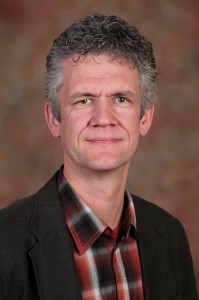
Bert Klumperman is a professor in the Department of Chemistry and Polymer Science in University of Stellenbosch, South Africa. Bert is very well known in the Polymer Science field with his studies on understanding the kinetics of radical polymerization reactions. Their research is based on not only mechanistic and kinetic studies but also the synthesis of advanced macromolecular structures for various applications. Please follow the links for further information on Bert’s research group and his current paper in Polymer Chemistry.
What was your inspiration in becoming a chemist?
During secondary school I was very much attracted to science topics (mainly mathematics, biology and chemistry). After initial thoughts on studying biology, I decided to go for chemistry and chemical engineering at Twente University (Netherlands). In my current position in Stellenbosch (South Africa) I get many opportunities to collaborate with scientists in Biochemistry, Microbiology, Pharmacology and the Medical School. I greatly enjoy this direction of my research.
What was the motivation behind the research in your recent Polymer Chemistry paper? (DOI: 10.1039/c1py00069a)
Throughout my career (initial industrial career at DSM Research, later academic career at Eindhoven University of Technology and Stellenbosch University), poly(styrene-co-maleic anhydride) (SMA) has always played a big role. It is almost like a red line through my entire career up to this point. In 2009, my colleague Prof Peter Mallon and I supervised a student who worked for a number of weeks on electrospinning of SMA. She showed that there are very interesting possibilities in terms of post-spinning modification. Among the many experiments she tried to immobilize a protein (lysozyme), which seemed to work. In 2010, we continued this work with an Honours student (William Cloete), who immobilized the enzymes described in the paper. In collaboration with a student from Biochemistry (Craig Adriaanse) from the group of Prof Pieter Swart, he carried out the enzyme immobilization and the characterization in terms of enzyme activity. It turned out that such a facile immobilization technique on a solid, high surface area membrane works very well.
Why did you choose Polymer Chemistry to publish your work?
I already had very positive experience with Polymer Chemistry for the publication of an earlier paper. The layout is done very nicely and, in general, they publish high quality work. It will be very interesting to see what their first Impact Factor (IF) is going to be. I would not be surprised if they manage to compete with the very top journals in the field of Polymer Science in terms of IF. For me at least, Polymer Chemistry will remain a serious candidate for publishing my future work.
In which upcoming conferences may our readers meet you?
After a conference in Turkey (Antalya, LRP’11) in mid-April, and one in my home town Stellenbosch (UNESCO/IUPAC Conference on Macromolecules and Materials) at the end of April, the next one will again be in South Africa. From 22-26 May, I will be in Pretoria to attend the 11th International Conference on Frontiers of Polymers and Advanced Materials. After that it will be quiet for a while and I will only attend the ACS National Meeting in Denver (28 August – 1 September), where Prof Kris Matyjaszewski will co-organize the 6th edition of an international symposium on Controlled/Living Radical Polymerization.
How do you spend your spare time?
Ever since I was 10 years old, I have actively played musical instruments. Initially I played the clarinet in a wind orchestra and several smaller bands. When I worked full-time in Eindhoven, I played clarinet in one of the top amateur wind orchestras of the Netherlands (“Koninklijke Harmonie Oefening & Uitspanning” from Beek en Donk) with which I participated in the World Music Contest in Kerkrade (Netherlands) in 1997. Just over 10 years ago, I switched to play the oboe. After a few years of practicing, I started to play the 1st oboe in a small symphony orchestra in Wassenaar (Netherlands), which I did for three years. At that time I had taken up my current position at Stellenbosch University (South Africa), which made it impossible to continue. Currently, I am still taking oboe lessons and at this very moment practicing Mozarts Oboe Quartet in F-major, which I hope to play with a violin, viola and cello in the second half of the year at some informal occasion in Stellenbosch.
Which profession would you choose if you were not a scientist?
This is the most difficult question to answer. The most obvious answer would be a professional musician, which in actual fact I have considered at some point. However, also several professions in the medical world would be serious candidates.










